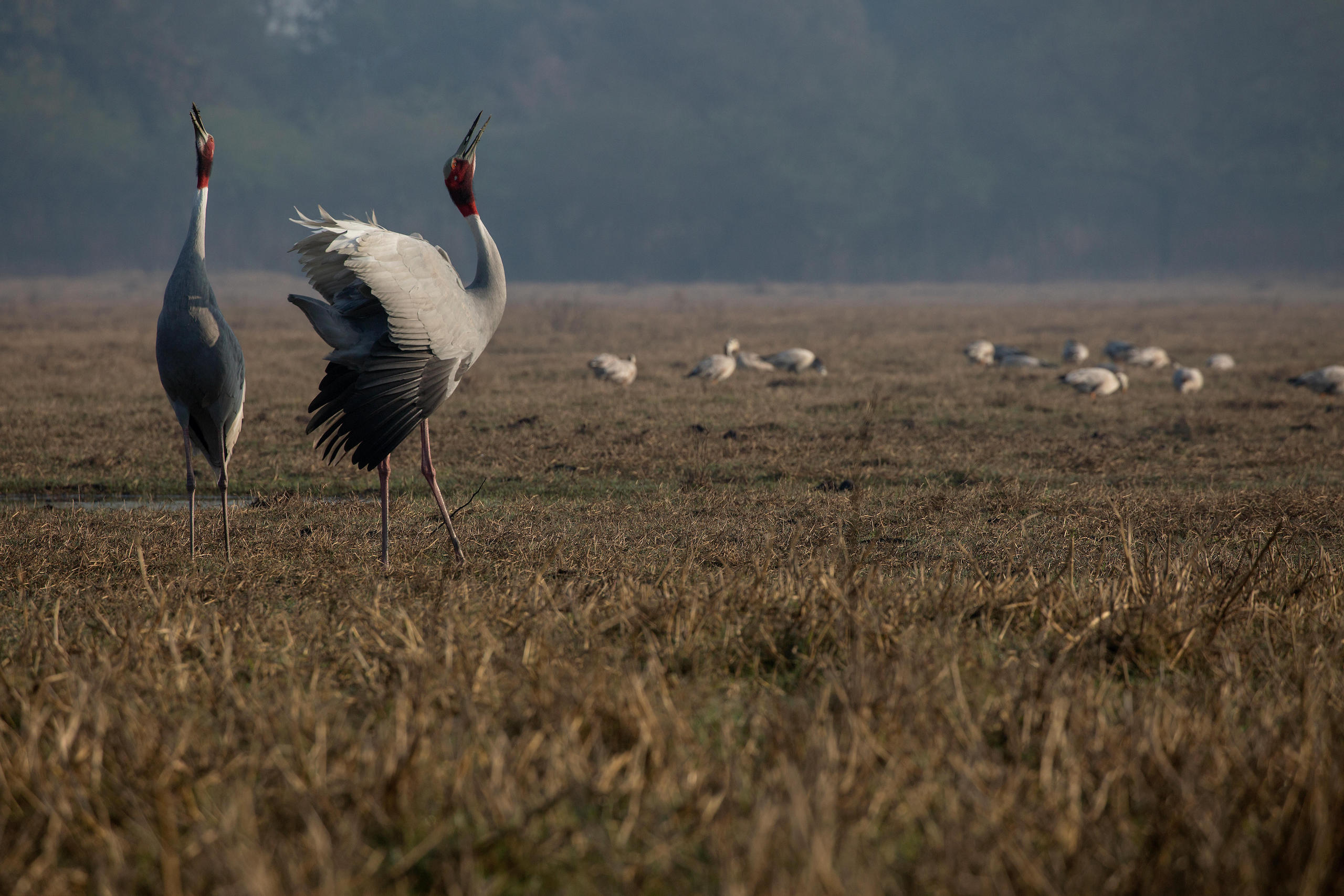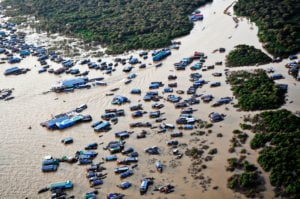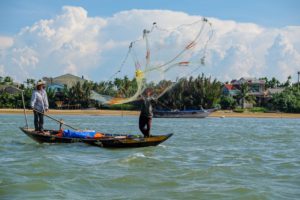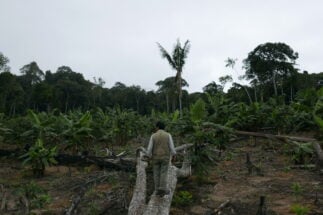A rapid and irreversible change is taking place in the Lower Mekong basin. Floodplain grasslands and freshwater wetlands are being lost – bustling ecosystems that once supported thriving communities of large mammals and birds. These include the spectacular sarus crane; the greater adjutant, one of the world’s largest stork species; and the Bengal florican, a chicken-sized bustard known for its parachuting display flight. Today, these are some of the region’s most threatened large birds. Meanwhile, deer, wild cattle and big cats have been virtually extirpated across most of the region by a combination of hunting pressure and habitat loss.
Three hundred years ago, the Mekong delta was a vast area of swamp forest, reedbeds and flooded grasslands that formed an enormous inland wetland roughly the size of Lebanon, known as the “Plain of Reeds”. Since then, the wetland has more than halved in size, and the delta is now a sea of cultivation and aquaculture.
Further upstream, the Isaan region of northeast Thailand is a major rice bowl, as are areas across the border in Laos. Plantations of rubber, bananas and other valuable crops are increasing across the region. This part of the Mekong floodplain would once have been cloaked in dry deciduous forests, reedbeds and seasonally inundated grasslands.
Drenched with nutrients from the monsoon flood pulses, the Mekong’s floodplains are incredibly fertile. The Mekong’s ecosystems form the heart of the Indo-Burma biodiversity hotspot, one of the most biologically important regions on the planet. New species are constantly being discovered: about 200 new species of plants and animals were recorded in 2020. Among the Mekong’s most recognisable species are the sarus crane, the masked finfoot (an elusive aquatic bird), the Siamese crocodile and the Mekong giant catfish, as well as the possibly extinct kouprey (a forest-dwelling wild cattle species).
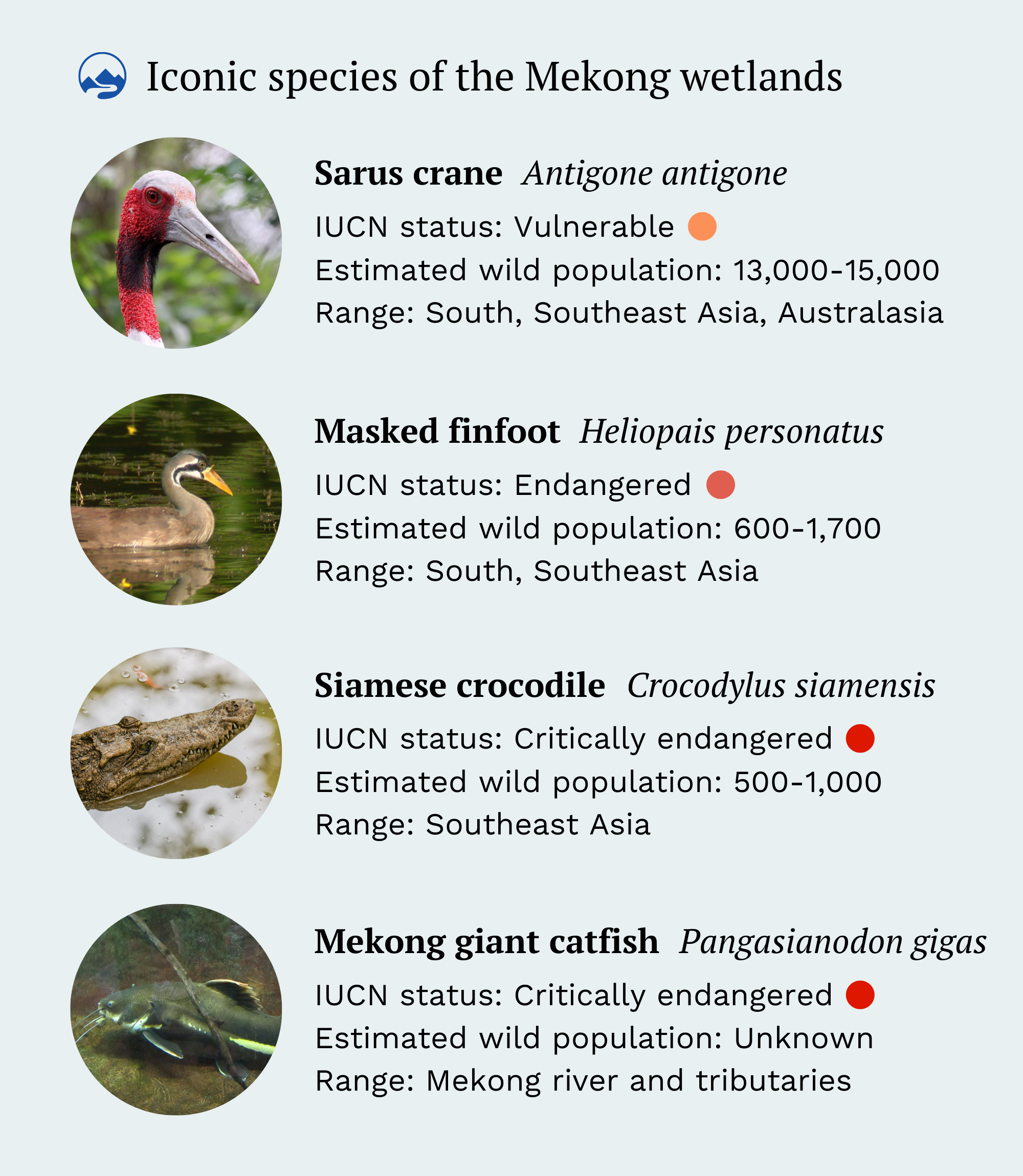
The fertility that gives the basin such rich biodiversity is also why large parts of the floodplain in Thailand, Laos and Cambodia are now a never-ending sea of paddy fields.
Everywhere along the Mekong, once-extensive wetlands persist in fragments. We can see the remnants of these marshes, reedbeds and forest swamps in Tram Chim National Park in Vietnam, Cambodia’s Boeng Prek Lapov and Anlung Pring protected landscapes, and Laos’ Xe Champhone and Bueng Kiat Ngong wetlands, among others.
In Thailand, a glimpse of what these places once looked like can be found at Nong Bong Khai lake and the Nam Kham Nature Reserve, where a compact but recently restored area of riverine reedbeds now abounds with migratory birds such as reed warblers and rubythroats.
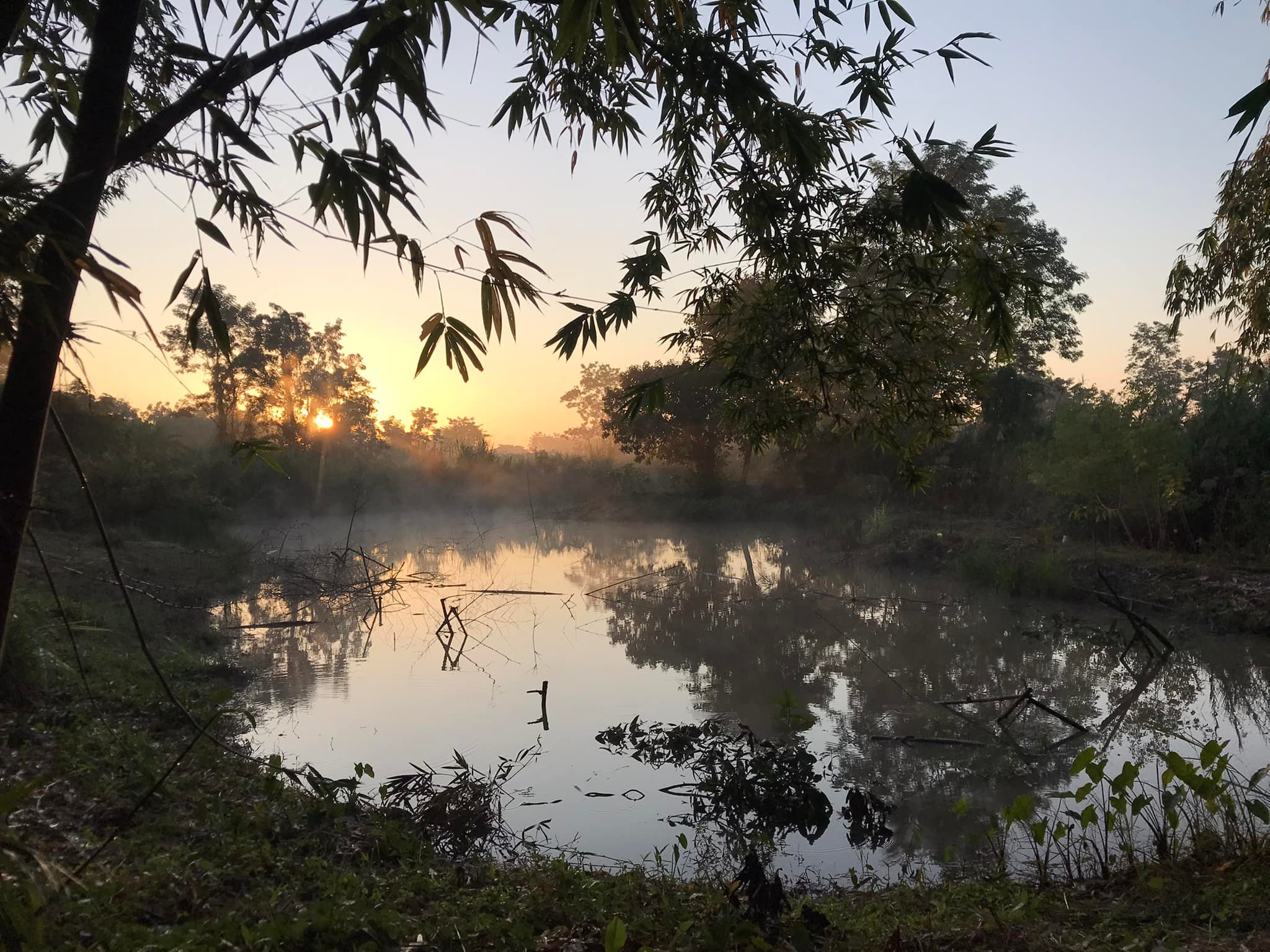
Decline of the spectacular sarus crane
Perhaps the most iconic bird species of the Mekong floodplains is the sarus crane. The only resident crane in Southeast Asia, which boasts a unique subspecies, the sarus crane once occurred widely in the region’s lowlands, extending north to Yunnan in China, where it is now extinct.
These majestic cranes breed in the dry deciduous forests and associated wetlands along the floodplains of the Mekong and its tributaries during the monsoon. Towards the dry season, they move downstream to settle in the wetlands along Cambodia’s Tonle Sap lake, as well as several wetlands on the upper Mekong delta spanning the Cambodia-Vietnam frontier.
Sarus crane populations have declined steadily in the Mekong basin, with less than 200 counted in Cambodia and Vietnam in 2021, a fall of 80% since 2013. It is unclear if any remain in Laos. The Thai population is tiny, descending from birds reintroduced to Buriram province.
The cranes face a range of threats, from unsustainable farming activities in their wintering range to high rates of nest failure due to disturbance of nesting adults and predation. Along with this disturbance, the extensive and rapid loss of floodplain wetlands on the lower Mekong is probably the most important reason for the bird’s precipitous decline over the past few decades.
Why are floodplain wetlands being lost?
The Mekong flows down from the Qinghai-Tibetan Plateau in China, where it is known as the Lancang. The river and its many tributaries snake nearly 4,000 kilometres across the hills and lowlands of mainland Southeast Asia, nourishing large areas of Laos, Cambodia, Myanmar and Thailand before spilling into the South China Sea in a vast deltaic plain which spans Cambodia and Vietnam.
Much has been written about the impacts of large dams on the Mekong. The construction of mega-dams has already greatly altered the river’s hydrology. More than 10 dams have been constructed on the upper Mekong in China’s Yunnan province. Meanwhile, the controversial Xayaburi and Don Sahong dams in the Si Phan Don region on the Laos-Cambodia border, as well as planned dams on the Tonle Sap River, are expected to cause further changes.
The operations of large dams on the Mekong result in unseasonal floods and reduced river flows, which place strain on the ecosystems that depend on the floodwaters, and the species which have evolved alongside the river’s rhythms. Birds that depend on the sandy islands and bars along the river for nesting have declined dramatically or are now locally extinct. River terns, black-bellied terns and the Indian skimmer, classic riparian species that formerly occurred along the Mekong and some of its tributaries, are now largely a thing of the past. River lapwings and small pratincoles, while a little more resilient, are at the mercy of unseasonal discharges of water which leads to inundation of their vulnerable riverside breeding habitat.
Overfishing, pollution, habitat destruction and dam building have also led to severe declines in the abundance of migratory fish in the Mekong. The weight of fish taken from the river is estimated at 4.4 million tonnes annually and is valued at 17 billion US dollars. If these fish populations collapse, Mekong countries such as Cambodia could lose a critical source of protein and livelihoods for millions of people.
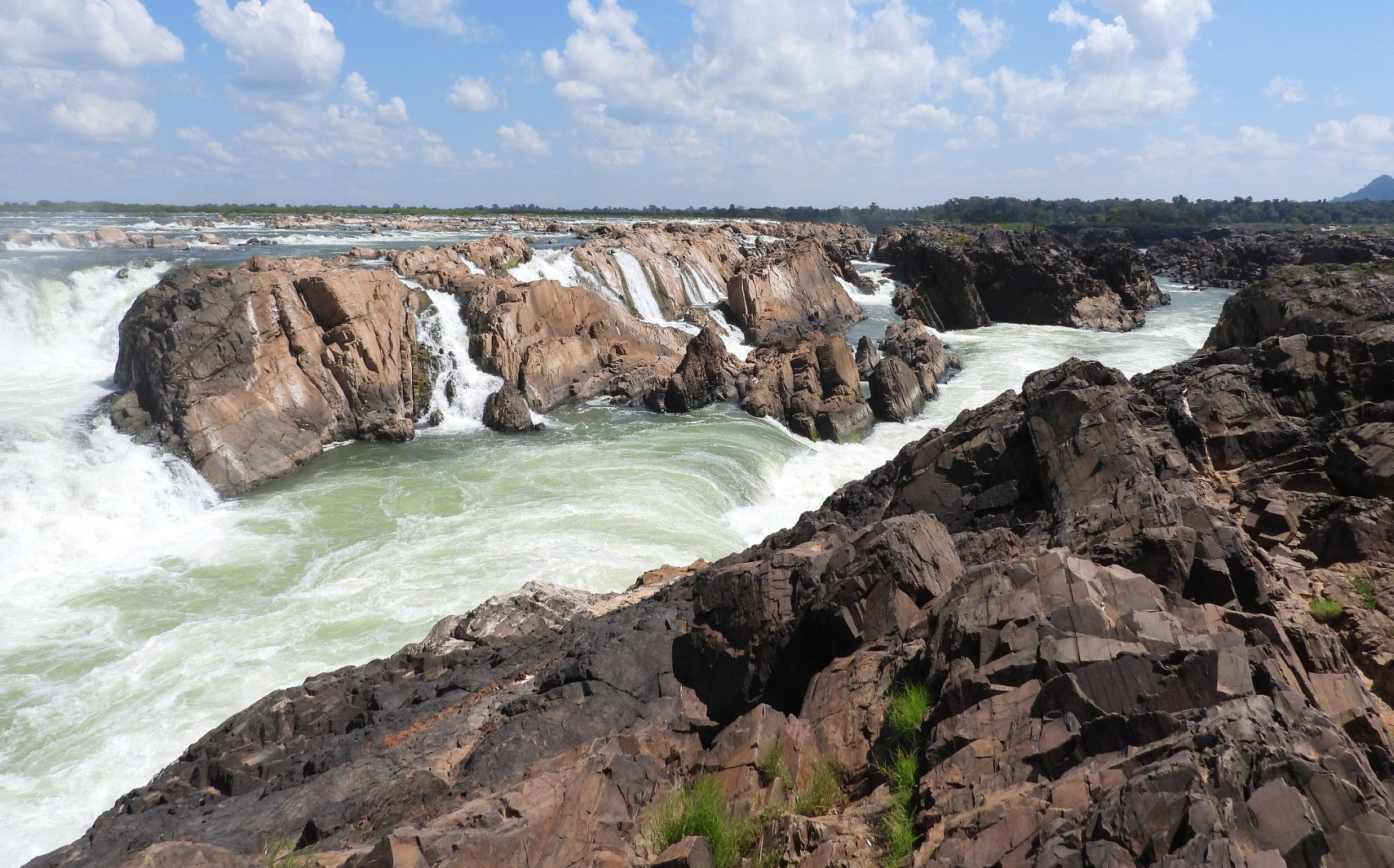
How to protect the Mekong’s floodplains
The Mekong’s remaining wetlands and forests are under siege from unsustainable use of natural resources as Southeast Asian countries strive to advance economic development.
What is urgently needed now is for governments, scientists and conservationists to scale up efforts to preserve the remaining floodplain ecosystems, while restoring connectivity between these landscapes wherever possible. Undammed riverine corridors such as the Sekong River in Cambodia are increasingly rare, and need to be secured for biodiversity and the livelihoods of local people.
Perhaps the most pressing challenges are the socioeconomic conditions of human communities living in the Lower Mekong basin. Persistent poverty in rural communities is a major stumbling block to action to preserve the biodiversity of the floodplain, and can be expected to continue to drive unsustainable use of natural resources into the future.
Ultimately, managing and protecting an area as vast and complex as the Mekong basin will require the involvement and cooperation of stakeholders at all levels, including local communities, and provincial and national authorities. Stronger international cooperation is also needed between Mekong states to improve transboundary efforts to preserve biodiversity, as well as advance the livelihoods of human communities.
